QuestionHi...we just recently brought home two 6 week old kittens. We have an eight year old shepherd and a 11 year old cat already. My older cat tolerates the dog...who would love to play with her, but my cat won't allow it. My dog is mostly afraid of my cat, but EXTREMELY aggressive toward other dogs and fights with EVERY dog. Yet she seems to be afraid of my cat, so I thought that she would be fine with the kittens. I have had them for two days now and I keep the kittens in a separate room and allow supervised visits often during the day. During the visits, my dog is always on a leash and has never made contact with the kittens(except for once when one scratched her on the paw). My dog only cries and doesn't show any signs of aggression, once my dog softly made a bite towards her when she ran away from her. I am afraid to let them get any closer because she can kill them with one bite. Sometimes my dog freezes while staring at the kittens, which doesn't seem like a good sign. If you could offer any advise on the behavior of my dog...it would be greatly appreciated. I am very scared of a CLOSE encounter.
AnswerThis is my second day answering questions in this category and I noted your unanswered question. Please let me know how they are doing now.
It is not unusual for a dog to be afraid of cat. Those claws are sharp. Once scratched twice shy. For tips on Introducing dogs and cats
http://www.fabcats.org/introducing.html
As for your dog's aggression issues it sounds like he has not been socialized with other dogs and is most likely protecting your family from them. For Tips how to deal with aggression go to the http://www.gallantshepherds.com/gsdhelp.htm
Dogs are aggressive for many reasons not just one. Aggression in dogs comes from lack of exercise (outlet for pent up energy) lack of boundaries, lack of trust, lack of consistency, confusion, fear, uncertainty, nervousness.
It's hard to know what to do if you don't understand where your dog is coming from. With a few changes in the way you relate to your dog, you will see very positive changes in short order. Your Dog is in fight mode when he is aggressive and going after other dogs. He wants to protect either himself or you. This is not a good state to stay or live in and it will definitely lead to bigger and bigger problems.
Since you have not stated how you correct your dog I'll need to cover a number of areas. Your dog needs exercise and your dog needs to know the rules in dog speak. Your dog thinks he is the pack leader, and he needs you to be a pack leader he can trust and submit to.
UNDERSTAND YOUR DOG
The first thing you need to know is that dogs are at their happiest when they are in their submissive state. You're dog can't submit when he is in fight drive. Dogs can switch drives and its your job to help him do that. In the wild the pack leader sets the boundaries and the dogs eagerly comply. They know it is in their best interests to do so - their life depends on it. A pack leader immediately and appropriately, corrects inappropriate behavior and ensures that the dogs needs are met.
Dogs live in the present so they don't know what they are in trouble for when they get heck for something they did yesterday or an hour ago. If they are asked to come and they comply only to get into trouble they are afraid to come the next time because when they come they get into trouble. This is one of many examples of how humans are inconsistent and unpredictable with their dogs.
BE A PACK LEADER
A pack leader is not someone that is mean to a dog, gets angry at the dog, yells at the dog, is inconsistent or unpredictable in behaviors. Dogs don't listen to that behavior they defend themselves from it. Dogs also sense anxiety, fear, frustration. A pack leader is confident and relaxed. A pack Leader provides sound structure, is consistent and can be trusted.
PACK LEADERS CONSISTENTLY WALKS THEIR DOG
German Shepherds are high energy dogs. They need an outlet for all that energy. Walking is a must a minimum of 1.5 hours daily is recommended.
In the Wild dogs usually migrate each day looking for food walking mimics what they would naturally do in the wild.
A PACK LEADER - TEACHES THEIR DOG TO HEEL BY THEIR SIDE.
Teaching a dog to heal is not as hard as most people think. The proper way to walk a dog is to have him walk on your left with a lose lead. not behind, not pulling (you're the leader not him), not trying to chase other dogs, not barking at people or animals.
A very fast pack leader style to teach your dog to heel. start by keeping the leash very short. Just long enough to keep him at your side. Consider using a a Halti and or a muzzle, for difficult dogs. A Halti allows you to move his head when you walk, keeping his attention in the right place. Walk tall, shoulders back and walk like you need to go somewhere (until the dog learns to stay by your side).
HOW TO CORRECT A DOG WHILE WALKING ON A LEAD
A dog that is pulling, sniffing, going the other way, barking at people, other animals, is aggressive etc. needs to be corrected.
4 Ways to Correct (Pack Leader Style)
1. Pull the lead towards you with a short fast jerk. Don't hurt the dog, don't yank so hard to create a neck injury. It is only to get his attention off what he is doing and on to you. And then relax your arm keeping it by your pant pocket. (if you want your dog to relax, you must relax! If you want your dog to be confident in You, be confident yourself!). The goal is to put your dog in a relaxed state of mind. He won't go there if you're not there. Put your thumb in your pocket to get used to where it should be. Hold the access lead in your right hand.
2. Adopt a verbal correction. I say Shhh very fast in an authoritative manner while quickly pulling the lead towards me. Used in a consistent manner my dog's understand what this means. I use this correction off and on lead. Off Lead I point at my dog, look him in the eye, Square off to him in a dominant position and say Shhh. I also gently move the dog to assist him to know what I want at times. I NEVER, YELL AT MY DOGS! I teach by example.
3. If the dog remains stubborn, I gently touch the dog with my foot. If your dog is on your left, use your right foot, bring it behind your left leg to touch the dog. I do not kick the dog or hurt the dog, I simply touch him to get his attention off of what he is doing and on to me. The Goal is to shift from one drive to the other and get is attention on me in order to place him in the relaxed submissive state.
Your dog won't submit if he is afraid. The Key is to get him to relax. I teach my dog to sit when I stop. And if stubborn I often stop until I have his complete attention.
The above corrections are designed to take the dog's attention off what he is doing to put his attention on you. The more he is corrected the more he will learn to pay attention to you and the less he will do the undesired behaviour. Corrections must ONLY OCCUR AT THE MOMENT THE DOG ACTS. Not 10 minutes later, an hour later and so on. You can prevent pulling or aggressiveness by correcting just as he turns his head to pull or to become aggressive. You can prevent barking by correcting the moment he starts to bark.
4. As a last resort correction, not to be used unless necessary simply give the dog a pinch on the scruff of the neck. This mimicks the way dogs correct each other. They understand it as a correction. And ask your dog to heal, or sit.
CONSISTENCY is the key. Your dog will learn fast.
PRAISE YOUR DOG
Just as important is Praise. When your dog is doing what you want. Say Good Heel! Good Sit!. This gives your dog a word picture he can relate to desired behavior. Pet your Dog. Hug Him. Give him a treat when he is doing what you want.
If he knows you like it he'll continue the behavior. You must be consistent!
BE A PACK LEADER - FIND WAYS TO ENJOY YOUR DOG AND BURN OFF ENERGY
BIKE WITH YOUR DOG
Get an attachment for your bike so you can run your dog without him pulling you over. My dogs love bike rides. It burns off excess energy fast. I love it too, because I can go as fast as them.
RETRIEVE RATHER THAN TUG OF WAR.
Tug of War brings out the dog's aggressiveness. Its a good Idea not to play this with your dog until you have a handle on him. Walk to a field and get your dog to retrieve a ball. All that running is good for your dog and he will love you for it.
BE A GOOD PACK LEADER - SOCIALIZE YOUR DOG
Until a dog has been in a specific situation he does not always respond the way we want. For that reason the Dog needs to be exposed to many different things on a regular basis.
Have your dog sit or lay at your side and practice having friends walk in front of you and around you. Correct your dog immediately as as above for in appropriate behavior. The second your dog turns his head to act inappropriately correct him Don't let him follow through with the behavior. If you allow him to get into fight drive it will be harder to get him under control.
If your dog does not react inappropriately, but allows people to be near, Let your friends come up to him slowly. No Eye contact, hand out. Let him sniff their hand and look at them. Proper dog introductions, are first nose, then Eyes. If he reacts. Either your or someone has invaded his space too quickly and the people need to correct their behavior. If he reacts to a proper introduction, correct him as above. Consider going more slowly with him. If he accepts them. Praise him.
Practice in many situations. Someone at the door. Socialize your dog with children (not a first of course), with bikes, skateboards, busy streets, loud machinery, lawn mowers, blow dryers, blenders, to give him confidence on how to handle the situation.
Teach your dog to pay attention to you on walks and to avoid dogs and distractions. But also teach your dog proper behavior around other dogs and people, socialize him with your neighbors and friends and their dogs.
BE A PACK LEADER WHEN YOU FEED YOUR DOG.
Do NOT leave food out all day for your dog. Do not feed your dog until after his walk in the morning so he feels like he earned it as he would in the wild.
Ask your dog to sit. Do not give him his bowl until he sits and stays.
Put the bowl down and then tell him to go eat.
Leave the food out for 15 minutes. The remove the Bowl. This teaches your dog that Meal Time Is meal time. If he has to miss a few meals, he'll learn to eat when the bowl goes down.
Praise Your Dog For Good Behavior.
PRACTICE LEAVE IT COMMAND (Teaches Self Control.)
Practice a "Leave It" command by placing food on the floor. Hold his collar as he is lying down. When he goes for the food say "Leave It" and hold him back by his collar. When he moves back say Good Dog. Teach him to look at you and wait until you say OK before he gets the treat. Make noise, a clicking sound with your mouth to get his attention at first. I've taught all my dogs this and meal time is a piece of cake...Uh Kibble....
This translates into leaving things he shouldn't get into around the house....
A dog with rules and boundaries, structure, consistency and exercise are a happy dogs. Doing this teaches your dog how you will react too. The more he can anticipate your reaction the more he will want to please you.
Get yourself some good books that help you to understand how a dog thinks. Ceasar Millan has helped many aggressive dogs and has written some great books to teach you how to understand your dog and how to become a pack leader. There are many books written specifically about the german shepherd dog.
Wishing You all the Best with Your Dog and Cat.
Sincerely
Gallant German Shepherds
http://www.gallantshepherds.com
Your comments are very understandable. As a dog owner myself (4 german shepherds)and counting. I understand your frustration and concern. It appears that there was no german shepherd expert in this category or at least one one willing to respond to old unanswered questions for an extended length of time.

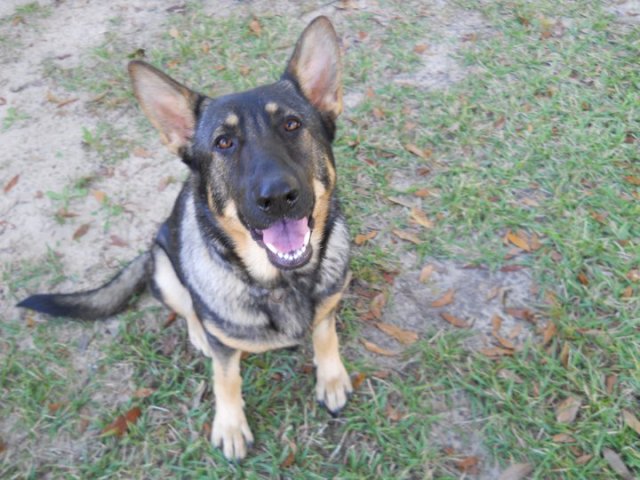 Training rescued German Shepherd
Question
Libby
My boyfriend and I have recently took in
Training rescued German Shepherd
Question
Libby
My boyfriend and I have recently took in
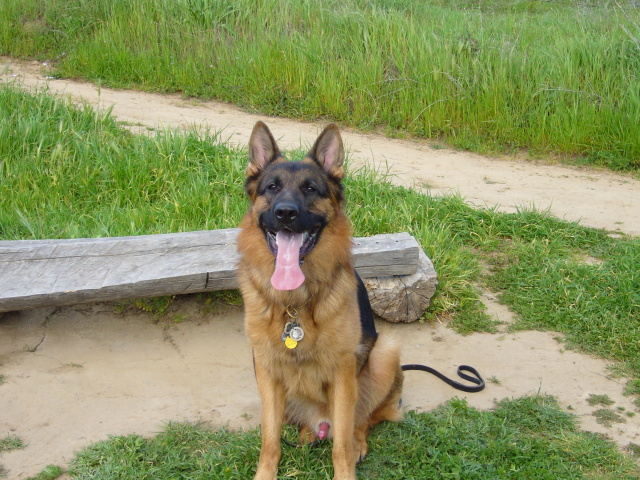 Aggression
Question
Ray
Hello, I need help...I lost my female GSD
Aggression
Question
Ray
Hello, I need help...I lost my female GSD
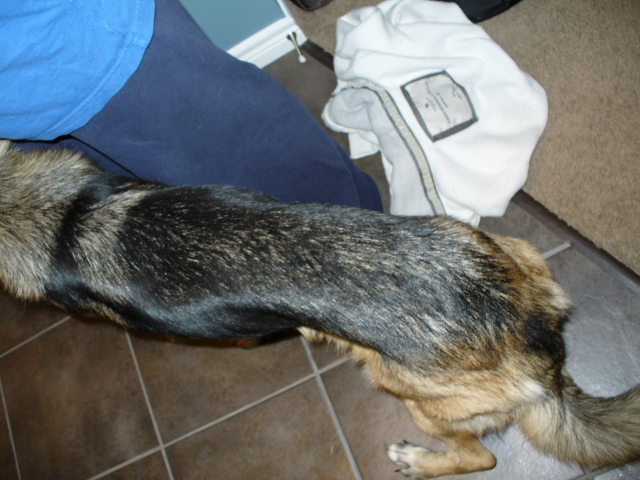 Very thin German Shepherd
Question
Sadie
Hi
We are having problems getting our
Very thin German Shepherd
Question
Sadie
Hi
We are having problems getting our
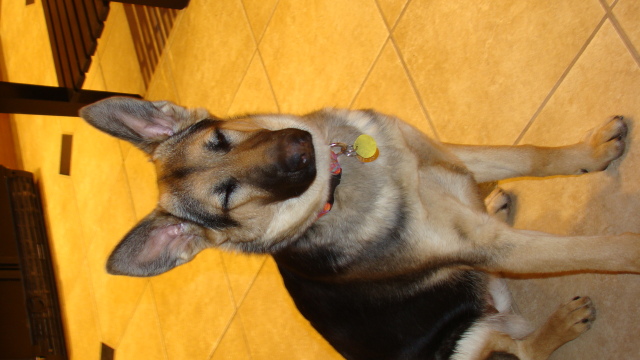 tymber
Question
tymber
ok my gsd is now 7 months old and i hav
tymber
Question
tymber
ok my gsd is now 7 months old and i hav
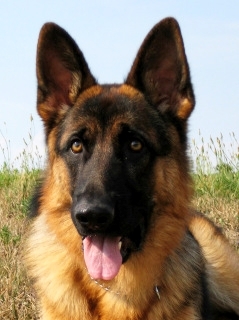 2yo German Shepherd Male
Question
My Boy...
Hi there....I have a 2 year old, pur
2yo German Shepherd Male
Question
My Boy...
Hi there....I have a 2 year old, pur